How to Buy and Transform a Coffee Roasting Business: Lessons from Crickle Creek

How one entrepreneur spotted opportunity in outdated systems and transformed a lifestyle coffee business into a growth engine.
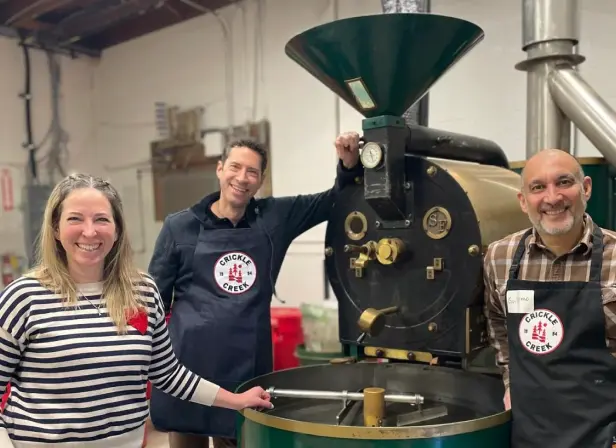
- Buy what you love: Passion for the business prevents it from feeling like a burden during tough scaling phases.
- See potential in inefficiencies: Manual processes and outdated systems can signal opportunity rather than problems for the right buyer.
- Modernize gradually: Spend the first year understanding the business before making major changes to avoid disrupting what works.
- Leverage unique knowledge: Deep industry expertise becomes your competitive advantage in crowded markets.
- Build accessibility: Personal relationships and approachable service differentiate small businesses from larger competitors.
- Plan for different workforce needs: Retired part-time drivers require different management approaches than full-time employees.
When Alejandro Martinez first walked into the barn that housed Crickle Creek Coffee's operations outside Calgary, he found a business frozen in time. Physical customer cards organized by hand. Delivery routes planned using neighborhood knowledge and intuition. Coffee deliveries dropped off in plastic bags with zip ties.
Three years later, that same business has transformed into a growing operation that ships specialty coffee nationwide, leverages automated route planning, and focuses on wholesale growth. The story of how Martinez acquired and modernized Crickle Creek offers insights for anyone considering buying an established business — especially one with delivery operations.
From El Salvador coffee farms to Canadian acquisition
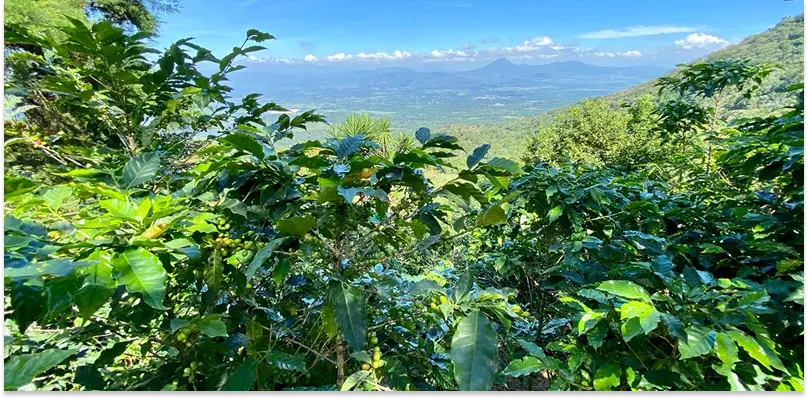
Martinez's path to business ownership began on his family's coffee farm in El Salvador, where he spent a decade learning specialty coffee production starting in 2008. “I was able to connect with a roaster in the UK that still continues to buy all our production from the farm,” he explains. “They buy at a fixed price to minimize the impacts of price volatility and to recognize all the additional labor and effort that it takes to produce specialty coffee.”
When Martinez moved to Canada in 2018, joining his sister who had arrived a few years earlier, they initially planned to import coffee from the family farm. But when they discovered Crickle Creek was available for acquisition, they pivoted.
“It was a lifestyle business,” Martinez says. “The previous owner had grown it to a size that she was comfortable managing. It was kind of stagnant, but it was a business that had consistent sales over the prior 10 years, very stable.”
Seeing opportunity in operational inefficiencies
What might have deterred other buyers attracted the Martinez siblings. “We were not afraid of all these inefficiencies or quirks that we found in the beginning.”
The delivery system epitomized these quirks. The previous owner used physical cards to track customer details and plan deliveries, writing down orders by hand and arranging them by geographic area for three part-time drivers who covered north Calgary, south Calgary, and rural areas.
“She would say, ‘Oh, this one should be ahead of this one and this one,’ and she would organize the cards. Then all the orders would be prepared, put in a bin, and then the cards would be given to the driver,” Martinez recalls. Drivers would work through a stack of cards, moving completed deliveries to the back of the stack.
For Martinez, who didn't know Calgary's geography, this system was unsustainable. “She gave me a big map of the city with all the neighborhoods and I'm like, ‘Yeah, no, that's not going to happen.’”
💡 Pro tip: When evaluating delivery businesses for acquisition, look for operational improvements that could unlock growth potential. Manual processes often signal opportunity, rather than problems.
Modernizing delivery operations for part-time drivers
Martinez began researching route optimization software, quickly discovering that most solutions assumed full-time drivers with smartphones and data plans. Crickle Creek's drivers were different.
“Our drivers are all retirees who go do deliveries once a week and want to get out of the house. They don't want a full-time job,” Martinez explains. “With retirees, it's a different dynamic because you cannot push anything into their phones — they have data restrictions and don't want to use data for this.”
The solution was a hybrid approach. Martinez uses Routific delivery software to plan efficient routes, then prints manifests for drivers who use their preferred navigation apps. This system accommodates the drivers' preferences while eliminating the manual route planning that consumed hours each week.
The change exemplifies Martinez's broader approach to modernization — understanding what works about existing systems before replacing them entirely.
💡 Ready to modernize your delivery operations? Routific's route optimization software can help you plan efficient routes in minutes. Start your free trial today.
Strategic patience during the first year
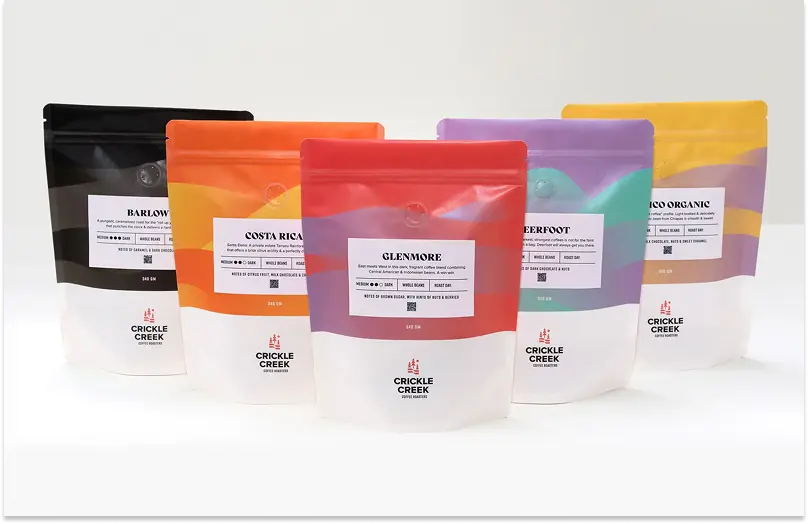
Rather than immediately overhauling operations, Martinez spent the first year understanding the business. “The first year it was just ‘What are we doing?’ — trying to understand how the business is managed before we did any drastic changes.”
This patience paid off when they began strategic improvements. The most significant:
- They upgraded from basic black coffee bags with simple labels to branded packaging.
- Professional mailers featuring the company logo replaced plastic delivery bags.
- Operations moved from a rural barn to a more central Calgary location with significantly more storage capacity.
“When we were in the barn, we could only have like 12 bags of raw coffee beans,” Martinez explains. “Now I can plan ahead: ‘Okay, I'm going to buy five bags of Brazilian, two bags of Mexican, five bags of Ethiopian.’ I can get 20 bags and have the next three, four months’ stock on hand.”
Leveraging deep coffee expertise for differentiation
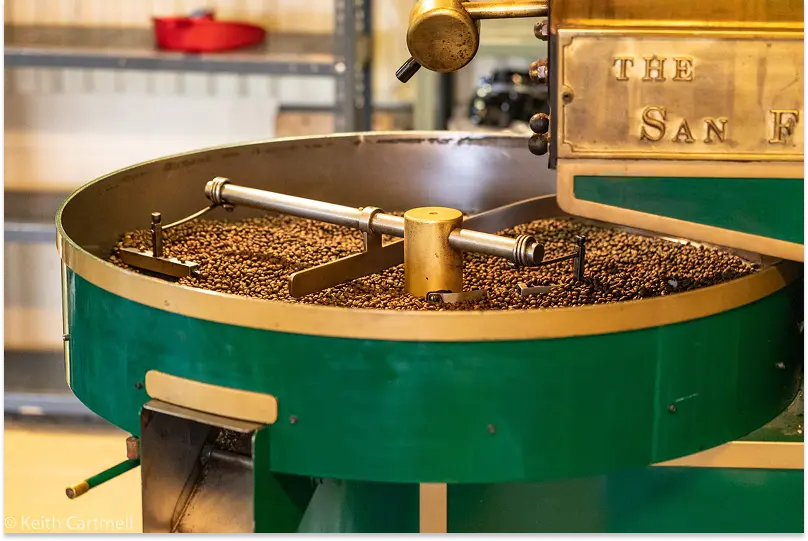
In Calgary's competitive coffee market, Crickle Creek differentiates itself through accessibility and education rather than competing solely on price or convenience. Martinez leverages his farming background to create unique customer experiences in the form of educational sessions where people learn about coffee origins, processing methods, and flavor development.
“For example, a lot of people have heard about the differences between arabica and robusta beans, but they’ve never actually tried a robusta bean. So in our session we can say ‘Here, try one, compare it to an arabica bean. Now you understand why,’” Martinez says. The robusta beans come from his family farm, where they're grown for pest management rather than commercial purposes.
This educational approach extends to their content strategy. “We pride ourselves on our approachability. So sometimes on our blog or Instagram we'll put in a recipe that includes coffee, or we will answer questions that customers have asked us.”
“We put our names out there. We make blogs and videos. People know who we are,” Martinez explains. “They know that when they place an order, they can just send me an email, ‘Can you hold that delivery for a week, or help me with something?’ They know they're talking to us.”
Building relationships through business networking
New to Calgary and Canada, Martinez and his family needed to build local connections quickly. They joined BNI (Business Network International), which requires members to have at least one business interaction weekly.
“The networking works great with BNI because it tends to be companies that are similar to ours,” Martinez says. “You get to talk to the business owners and there's a lot of service providers, companies that do mortgages or real estate agents.”
The network has generated corporate customers for their educational coffee experiences, particularly around Christmas. More importantly, it's connected them with other local business owners who understand the challenges of scaling a small operation.
Scaling challenges and wholesale ambitions
Despite steady growth, Martinez faces a common small business challenge: How to break out of operational routines to focus on scaling. “Right now the biggest challenge is how do we grow it? We've been growing at 5% and we need to really start growing it more.”
Their solution focuses on shifting the customer mix from individual retail to wholesale accounts. “Our current customer base is 90% individuals, and we want to move it to maybe 70 or 60%. So we need more wholesale accounts.”
The business already ships nationwide, maintaining customer relationships even when people relocate. “For example, we just had a customer that told us they will be moving to Quebec for family reasons. They were pleased when we said ‘We'll ship it to you. Don't worry.’”
Lessons for business acquisition
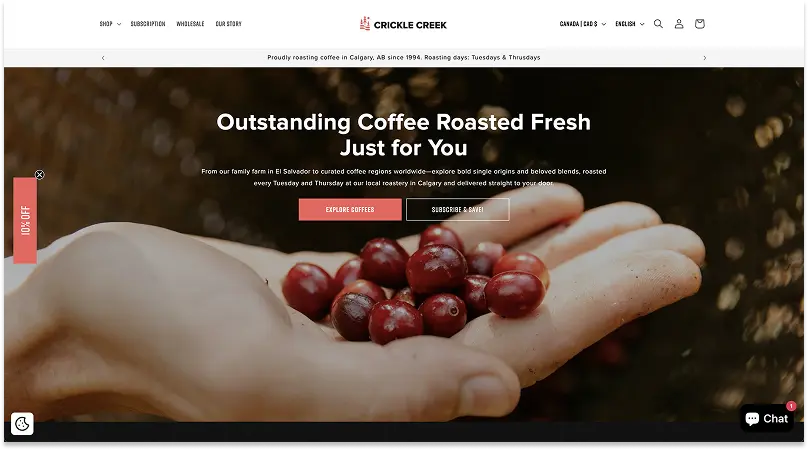
Martinez offers three key insights for anyone considering acquiring an established business:
- Choose passion over profit potential: “Don't get in there for the money. First of all, find a business that you have an affinity with, and that you will actually enjoy doing. Otherwise, it will definitely feel like a burden.”
- Invest in professional guidance: “Don't be afraid to find advisors along the way. I had an accountant that helped me review the accounts, and our lawyer really helped us out to structure the company that did the acquisition.”
- Identify your unique value: “Try to get into a business where you can see what value you bring. In my case I could see ‘We can automate this whole process. We can make it faster for sure.’”
Martinez points to Chobani as an example: “The guy bought a plant out of bankruptcy. He had a vision for the business, and he thought he could make it work. And now look — it's one of the most valued brands.”
The advantage of Canada's business environment
Having operated in both El Salvador and Canada, Martinez appreciates the streamlined nature of Canadian business operations. “El Salvador is very bureaucratic. So instead of focusing on your business, you're constantly dealing with paperwork and submitting reports to the government.
“Everything is more streamlined here. It's simpler — you can find most of the information online.”
In Canada, he notes, payroll takes five minutes, annual tax reporting is straightforward, and reliable infrastructure means “things work”. This operational efficiency has freed Martinez to focus on what matters: Growing the business and serving customers.
Looking ahead: content and wholesale growth
Crickle Creek's future strategy centers on content creation for marketing, alongside wholesale expansion. Martinez's sister brings marketing and graphic design experience to help scale their educational messaging through short-form video content.
“We want to be doing more content creation because that's what customers value,” Martinez says. “And nowadays it's TikTok, right? Short videos.”
The business model — roasting to order and shipping for freshness — positions them well for continued growth. “We roast to order. So we get an order, we roast it and we ship it for freshness. We have really shied away from keeping our coffee on a shelf for six months because it detracts from the brand.”
For Martinez, the transformation of Crickle Creek represents the successful marriage of traditional coffee knowledge with modern operational efficiency. By respecting what worked about the original business while systematically addressing inefficiencies, he's created a platform for sustainable growth that serves customers across Canada.
The lesson extends beyond coffee: sometimes the best acquisition targets aren't the most polished businesses, but those where your unique skills and vision can unlock hidden potential.
Frequently Asked Questions
What's the difference between route optimization and delivery management software?
Route optimization focuses solely on finding the most efficient sequence of stops. Delivery management software like Routific handles the complete delivery operation — route optimization, driver coordination, customer notifications, proof of delivery, and real-time tracking. For businesses like Crickle Creek with part-time drivers and specific delivery requirements, you need software that manages the entire delivery process, not just the route planning component.
Can delivery software work with drivers who don't want to use smartphones?
Yes. Modern delivery software like Routific offers flexible deployment options. You can optimize routes digitally while providing drivers with printed manifests and allowing them to use their preferred navigation apps. This hybrid approach gives you the efficiency benefits of automated route planning while accommodating drivers who prefer traditional methods or have data usage concerns.
Related articles
Liked this article? See below for more recommended reading!

How to Start a Coffee Delivery Business

11 Best E-Commerce Platforms for Small Businesses in 2025


